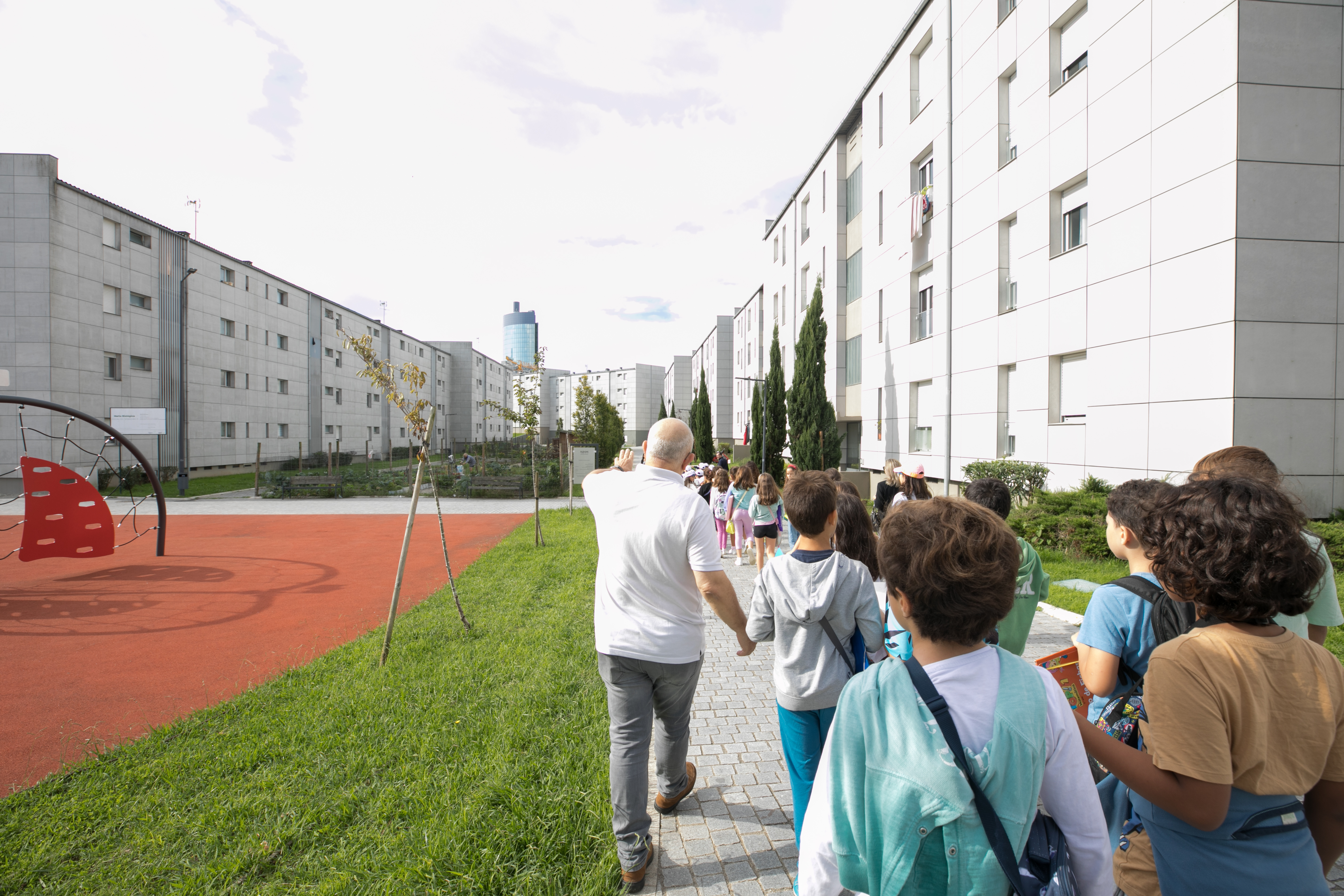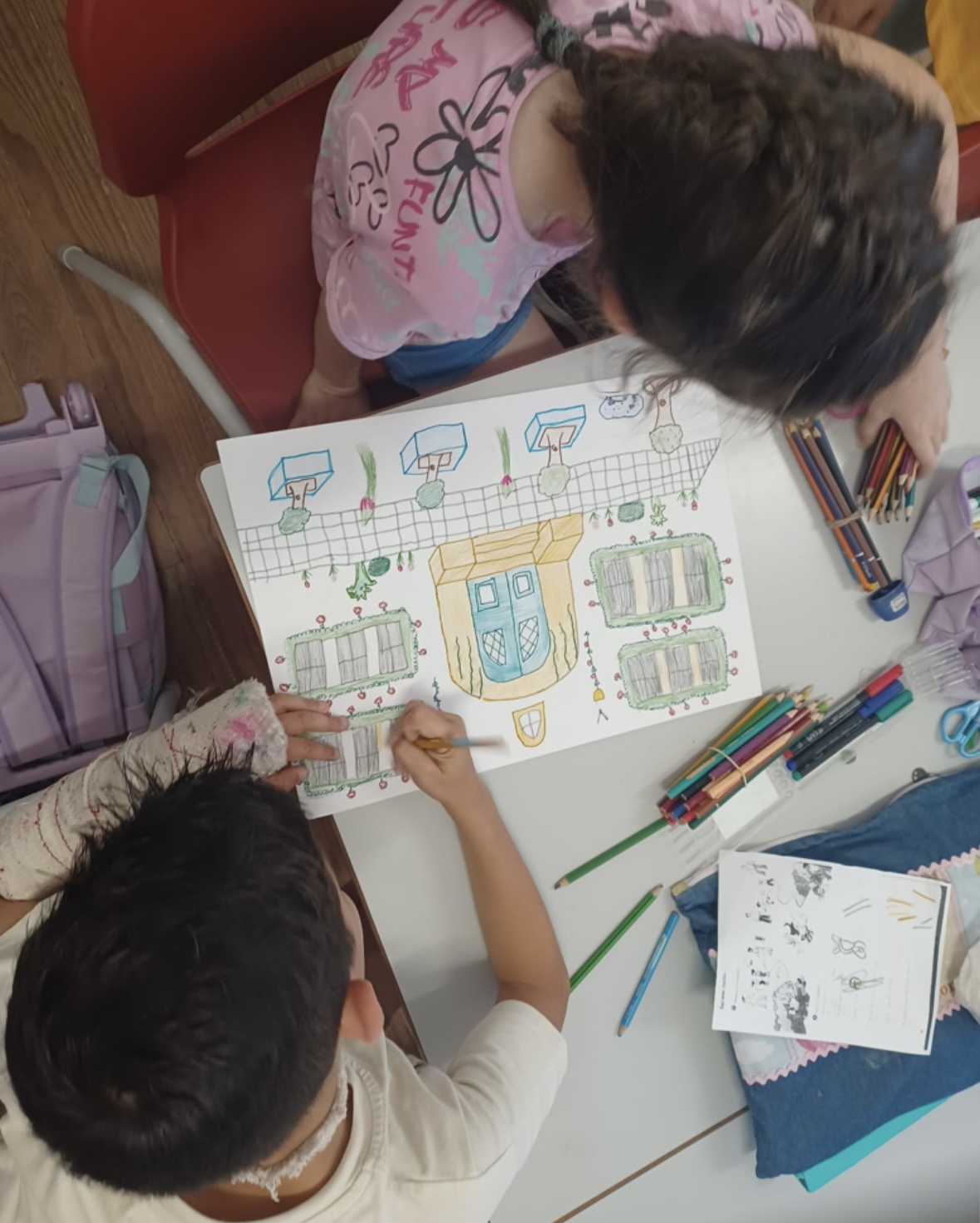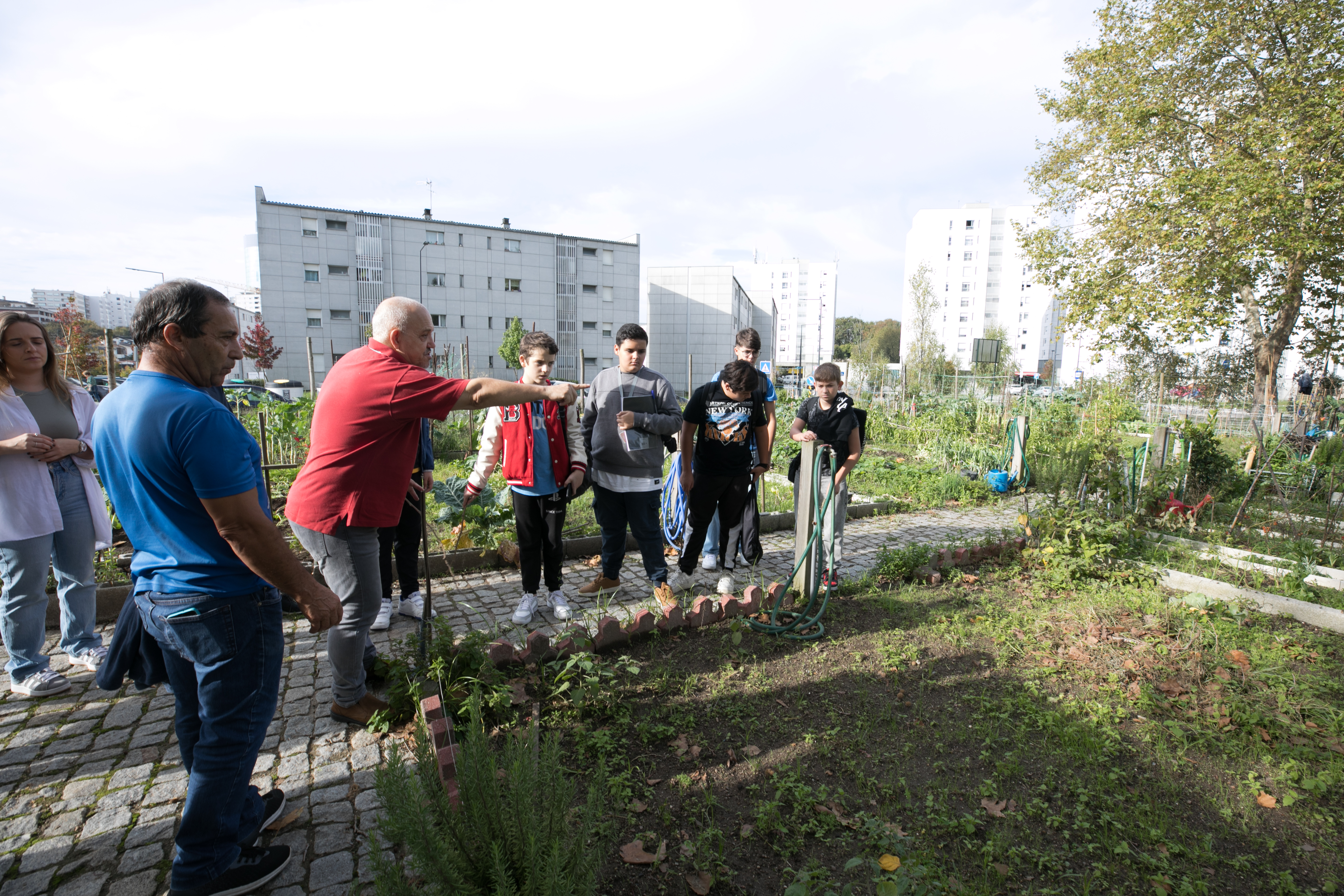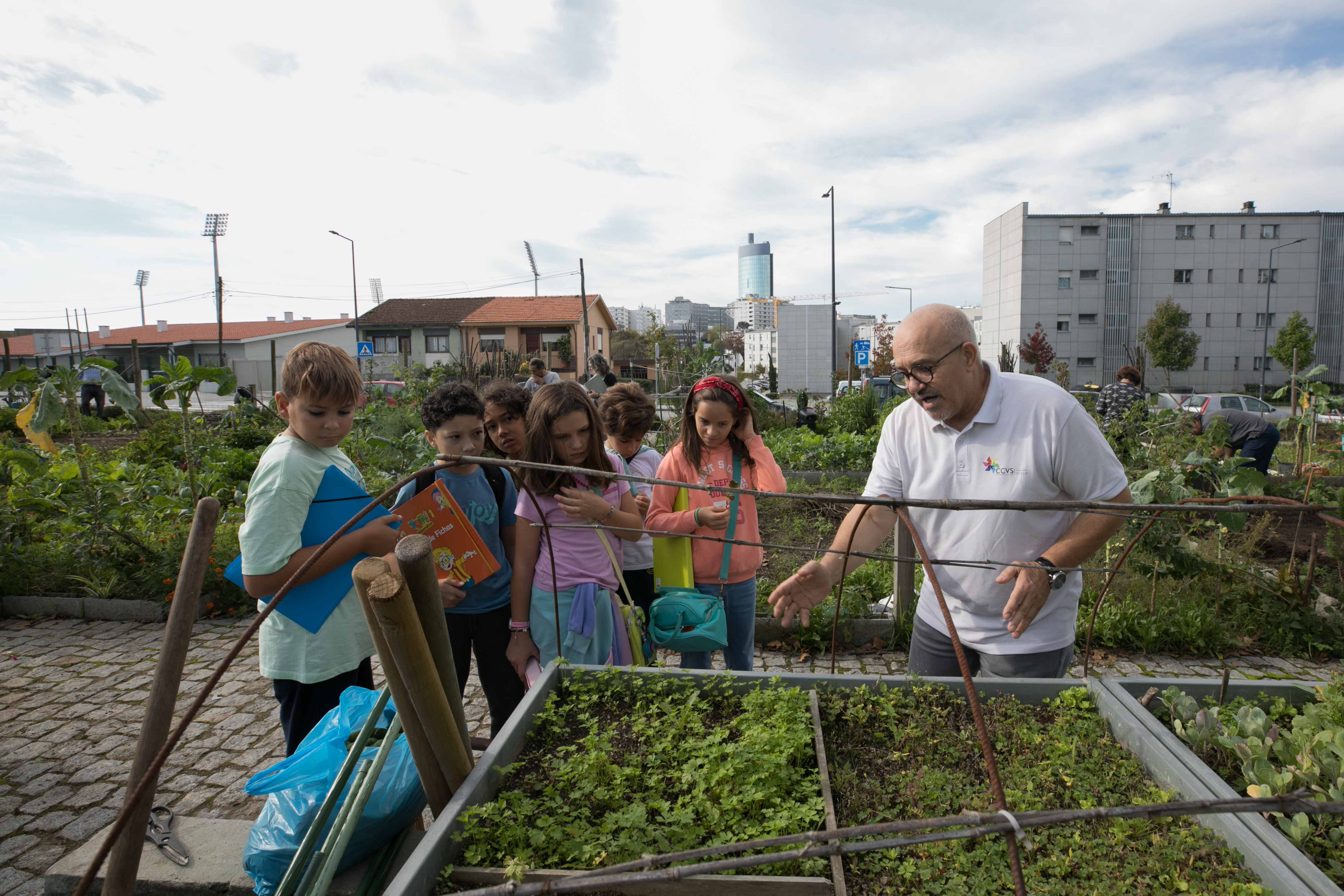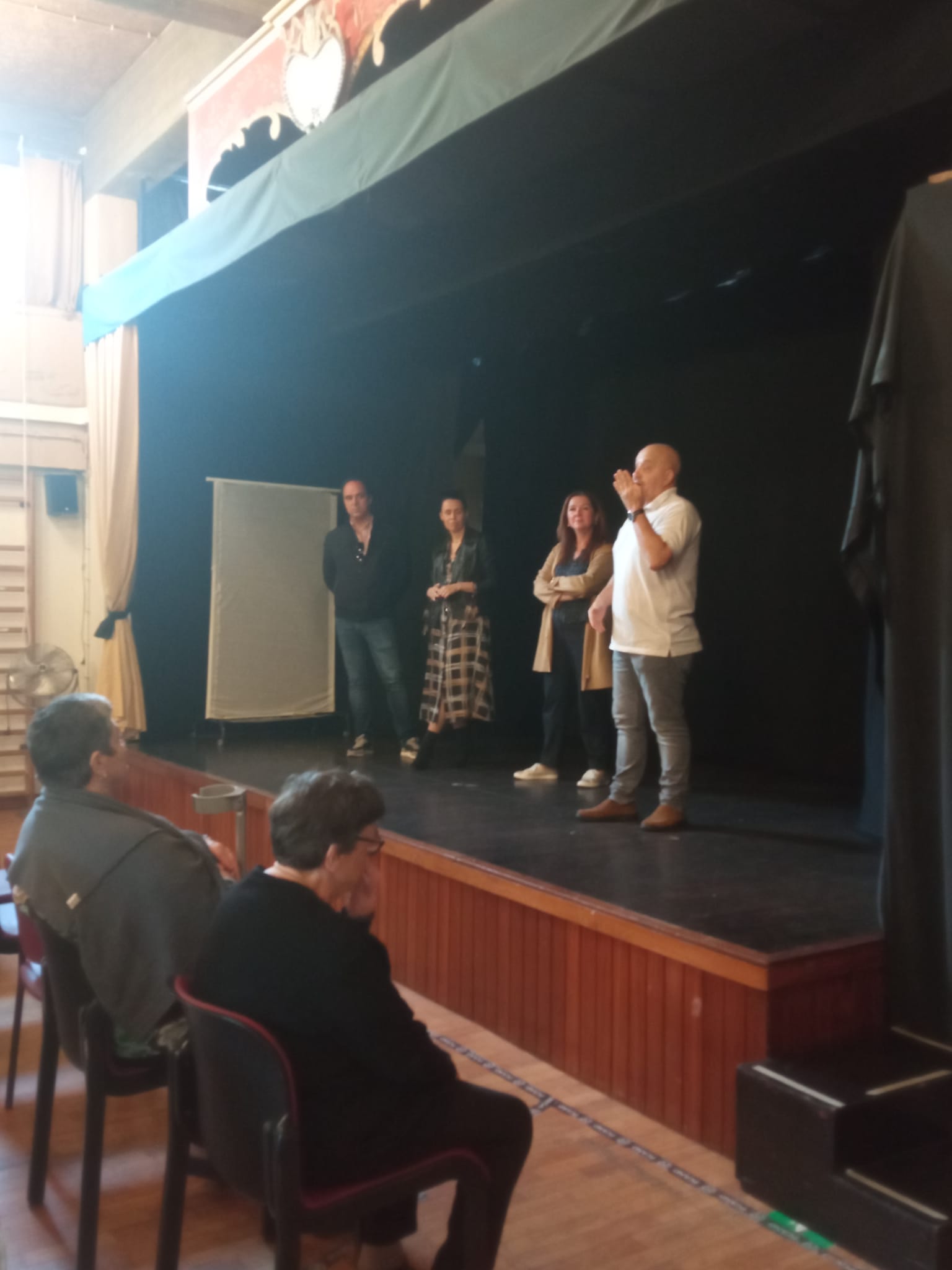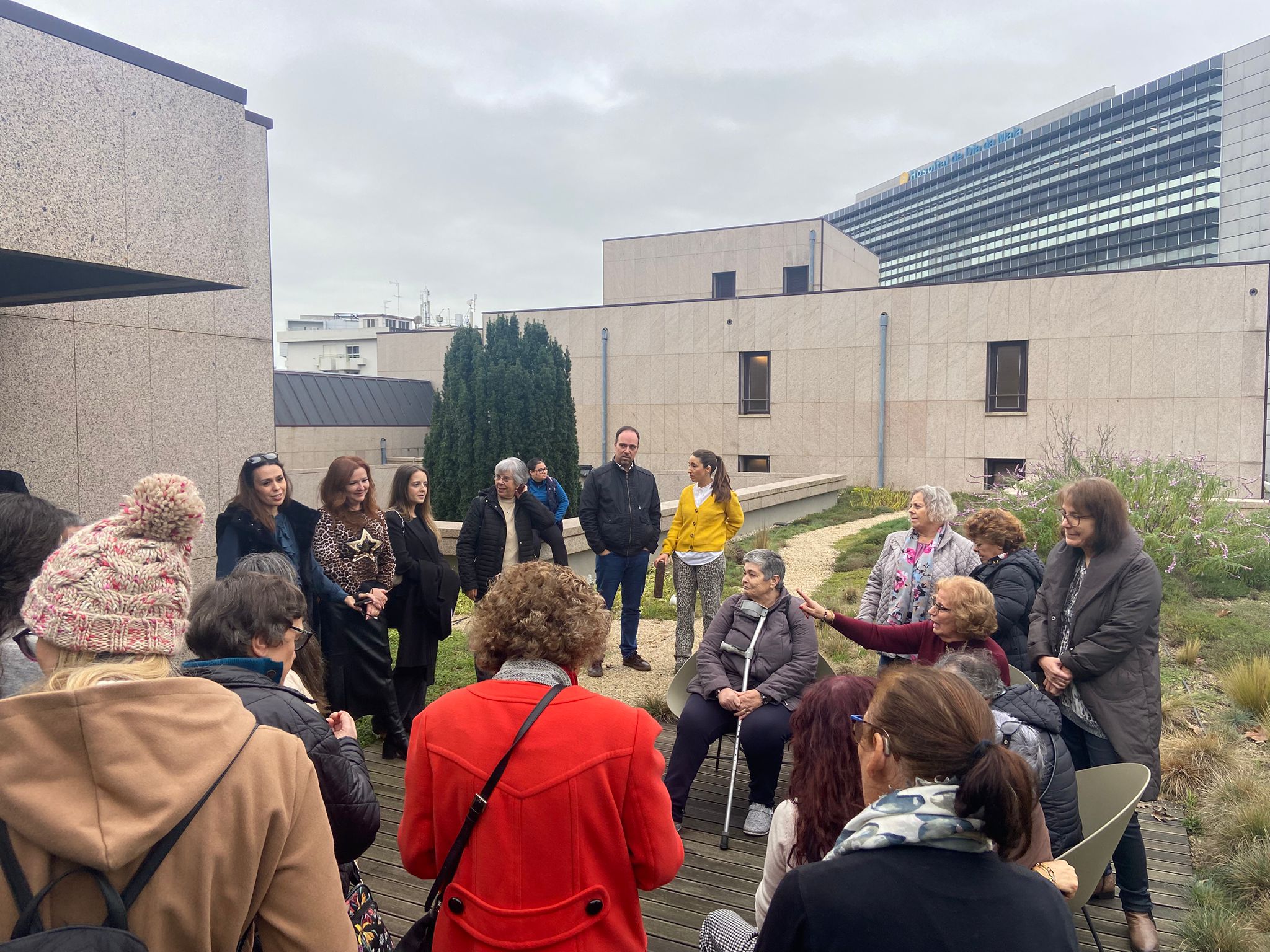Reconnecting with nature
Sobrotherhood
Sobrotherhood Rebuild the lost sense of community in the neighbourhood of Sobreiro by reconnecting w
The SOBROTERHOOD Project provided a well aligned collaboration between the youngsters and the elderly community in the Neighbourhood of Sobreiro, in the city of Maia (Portugal), as to develop an ideas contest aimed to incorporate biophilic design for the re-activation of an area at the core of the neighbourhood with no function at the present date. What was later developed was a true mentorship logic where these two very different groups of individuals designed the future of this space.
Portugal
Local
Maia
Mainly urban
It refers to a physical transformation of the built environment (hard investment)
Yes
2024-12-31
Yes
Horizon2020 / Horizon Europe
No
No
As a representative of an organisation, in partnership with other organisations
The project aimed to model and test in Sobreiro the activation of self-sustainable socio-economic ecosystems at district level, relying in the pluralist potential of the marginal perspectives, biophilic desingn and the NEB guiding framework. the carried out action intended to boos the senso of belonging and upgrade the sense of identity among the Sobreiro community, by envolving the 55+ community of the neighbourhood and the youngsters from the schools. specificaly, what was carried out was a schools ideas contest, in conjunction with a mentorship program for individuals aged 55 and older. Taking the experience of "Dia da Criança", students explored the positive crucial role of nature, with subsequent visits to the Sobreiro accompanied by senior representatives, learning about the distric's evolution, the importance of connecting with nature taking part in the activities such as working in the community gardens. During these visits, the students visited the rooftop area to be refurbished and targt to the proposals to be presented from the ideas contest. Maia Municipality played an active role in visiting the schools classrooms to guide studnts in fnalizing their ideas. With a total of 21 submissions, from students ranging from 2nd and 8th grade, the works were evaluated by the juri (project partners+Sobreiro Community Center representative+ independent architect) and 3 winners were choosen. Consulting the dedicated project website, a short vídeo of the revitalization proposals can be seen. on february 19th, a smal gathering was organised and the ideas contest winners were annouced and celebrated. The improved quality of the defined public space by implementing ihe NEB approach was achieved through the active involvement of a large number of people. This collaborative effort ensured that diverse perspectives were considered.
Nature
Community engagement
Sustainability
Biophilia
Innovation
The proposed exercise carried out trough the ideas contest was all along set to take in consideration the sustainability factor translated in the very core of the biophilic fundaments passed to the students and elderly community that took part. To align both the youngsters and the elderly perspectives on the aspired future for this public space was a not often seen aprouch, but one that worked very well and managed to produce very good resuls.
The aesthetic and quality of this experience is undoubtedly of great value. Not only the methodology developed produced pieces of great aesthetic value, but many of the shared moments had it too. The community gardens, the visit to the the green roof in Fórum Maia allowed many a first contact with such realities and its benefits.
The target groups of the Sobrotherhood projetc were the youngsters - students raging from 7 years old to 14 years old - and the elderly community - in this case all were mauch older than 55, are groups not often considered for their very specific moment in life. To bring them together to define the use and transformatio of such public space was not only fruitful but it allowed to have very differente, yet complementary perspectives.
Allowing the participant civil society to take part in this project - and not only the students and elderly, but to extend such reflection to the parents, the entire school community (teachers, official representatives), the municipal ecosystem, and the experts involved, has brought along a strong sense of need in better public spaces as well as the importance of the envolvement of all of those that are to live and benefit from it.
The multisectoral team - schools, civic society, community center, municipality, social housing company, biophilic design experts, strategy and sustainability expert, design expert and architect assured a multilevel perspective as well as a hands on approuch on this challenge. The regular meetings and all along envolvment allowed for the smooth implementation of the project and a close on risk assessment, allowing to detect alternative approaches when needed.
The experts above mentioned have helped greatly on the methodology definition and workplan implementation throughout the project. The expertise in the field of education has allowed a better understanding on the take outs for the youngsters. The expertise on matters such as urbanism, strategy, governance and sustainability allowed to better align future approaches on urban problems directly from the detected problems extracted from the analysis taken from the aspired interventions from the elderly and students vision.
the innovative character of our project as to be the alignement of the elderly and youngsters vison on the future, considering the integral sustainability of the proposed solutions, having to be respectfull of the biophilic fundaments.
The engagement methodology has been successfully implemented, including:
• An ideas competition for students in the Sobreiro district, aimed at providing insights for the upcoming revitalisation of the rooftop.
• A mentorship program that engaged the 55+ community, fostering intergenerational collaboration on the reactivation of open spaces
• A training program on biophilic design principles for competition participants, helping them reconnect with nature and their surroundings.
The partners collected all the ideas from the schools and created a shared document, which was evaluated by a jury composed of 5 representatives from partners and other stakeholders. The resulting main concepts highlighted by the students were:
- The need for a play area for children.
- The inclusion of water features (such as fountains) for relaxation, along with a variety of plants for the same purpose.
- The presence of tables and benches for resting and socializing.
- A dedicated area for other living beings (such as cats, dogs, birds, and fish).
These elements are essential for the space and align with the principles of biophilic design and NEB.
• An ideas competition for students in the Sobreiro district, aimed at providing insights for the upcoming revitalisation of the rooftop.
• A mentorship program that engaged the 55+ community, fostering intergenerational collaboration on the reactivation of open spaces
• A training program on biophilic design principles for competition participants, helping them reconnect with nature and their surroundings.
The partners collected all the ideas from the schools and created a shared document, which was evaluated by a jury composed of 5 representatives from partners and other stakeholders. The resulting main concepts highlighted by the students were:
- The need for a play area for children.
- The inclusion of water features (such as fountains) for relaxation, along with a variety of plants for the same purpose.
- The presence of tables and benches for resting and socializing.
- A dedicated area for other living beings (such as cats, dogs, birds, and fish).
These elements are essential for the space and align with the principles of biophilic design and NEB.
The community engagement and codesign approach are a transferable and replicable methodology. In fact, Maia municipality has already implemented this technique, for instance, in the EHHUR Project.
the very basis of the project aims, at a larger scale, to reflect on the challenges that urban areas face today. The scope of the project itself has contributed to the "roadmap" of future actions to take in adressing these problems, particularly in the way it showed us how we can address everyone daily life's needs through a shared vision/approach on the problem, weather we talk about the use of public space, mobility and sense of belonging.
Project KPI list:
Strengthened resilience to the unavoidable impacts of climate change (Target value = 50; Actual target value = 150): A combination of increased awareness and refurbished infrastructure positions the community to respond more effectively to climate challenges. This dual approach creates a foundation for long-term resilience. This number include the citizen that will be positively impacted by the rooftop revitalisation and greening, i.e. at least the tenants of the three towers connected to the rooftop.
Climate-friendly jobs created or sustained (Target value =2; actual target value = 2): This project involved numerous stakeholders and created many opportunities for future green jobs. While it was not possible to create physical jobs during the project's duration, its impact will be felt in 2025. As the refurbishment begins, new job opportunities will be realized.
Strengthened resilience to the unavoidable impacts of climate change (Target value = 50; Actual target value = 150): A combination of increased awareness and refurbished infrastructure positions the community to respond more effectively to climate challenges. This dual approach creates a foundation for long-term resilience. This number include the citizen that will be positively impacted by the rooftop revitalisation and greening, i.e. at least the tenants of the three towers connected to the rooftop.
Climate-friendly jobs created or sustained (Target value =2; actual target value = 2): This project involved numerous stakeholders and created many opportunities for future green jobs. While it was not possible to create physical jobs during the project's duration, its impact will be felt in 2025. As the refurbishment begins, new job opportunities will be realized.

